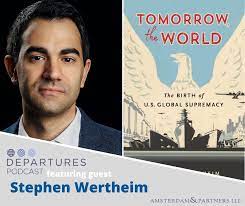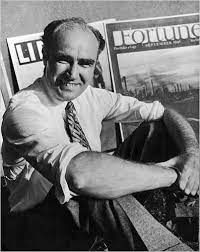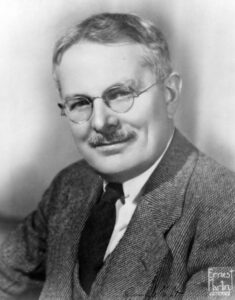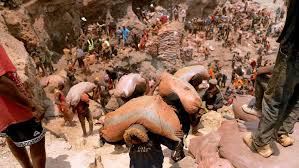How Foreign Policy Elites Launched U.S. Hegemony in 1940
Wednesday, July 26th, 2023Tomorrow the World; The Birth of U.S. Global Supremacy, Stephen Wertheim, 2023
Quincy Institute of Responsible Statecraft <> Henry Luce <> Wakter Lippmann
In the 1930s the United States found itself surrounded with totalitarian governments in Russia, Italy, Japan, Spain, and Germany. The U.S. belief in its democratic exceptionalism was under direct economic and ideological threat from aggressive totalitarian regions both in Europe and Asia. The U.S. economy and way of life required a broader reach than could be supplied in the western hemisphere. Foreign policy elites too numerous to list together with public influencers Henry Luce, publisher of Time, Life, and Fortune magazines, and political commentator and journalist, Walter Lippmann began seriously to wrestle with new conceptions of the proper role of the U.S. in world affairs. Consensus could not be reached in such diverse intellectual circles but there was broad agreement that any new foreign policy focus would require widespread public support. This stalemate might have continued had Nazi Germany not invaded and quickly defeated a superior French-British military force in France in 1940. This book is a study of how our current, 83 year old foreign policy stance of U.S. global military supremacy came into existence.
Peace, however, came at an unprecedented price after Germany conquered France and briefly bestrode Europe. For the United States to maintain a hemispheric military posture could potentially leave Europe to the worst Europeans and Asia to the worst Asians—totalitarian dictatorships harnessing the tools of industrial modernity to achieve armed conquests and subjugation. This too, was problematic for the traditional self-definition of the United States, even though the country faced no grave and imminent threat to its physical security or economic prosperity. If the Axis powers, or any other hostile combination, were to achieve domination of Europe and Asia, the United States could no longer fulfill its mission of ushering the world into an “American” emancipated future. Much of the earth, moreover, might effectively close down to U.S. Participation, at least in ways that would be compatible with liberal commerce and law. These objectives, which once dictated that the United States practice peaceful intercourse outside its hemisphere, now became militarized, requiring force to back them. For this reason many Americans decided prior to Pearl Harbor that it was worse to risk leaving Europe and Asia to a brutal fate than to risk engaging in global warfare evermore. To them, World War II was a war of choice—the right choice– and so would be U.S. Dominance after victory.
Each side formulated a reasonably coherent account of U.S. Interests and responsibilities. Each side developed a plausible ideological presentation of its case as American and internationalist alike. Each side also possessed significant political power at elite and popular levels, enough to make the outcome genuinely uncertain until 1941. Still, the sides did not face equal odds of success. America’s foreign policy class, built up over two decades between the wars in Europe, was not about to see U.S. political, economic, and cultural influence reduced to a hemispheric husk if such a fate could be avoided. American elites expected, and felt entitled, to traverse the globe and exchange ideas, goods, and money widely. They saw themselves as part of a small cohort of people who governed the world, whether they understood world governance to be a principally American, Anglophone, white, Western, or civilizational project.
In these respects, U.S. Policymakers and intellectuals in World War II continued the trajectory of American foreign policy since the turn of the twentieth century. Presidents William McKinley and Theodore Roosevelt had brought the country into the ranks of the colonial great powers. They positioned the United States as one of a handful of guardians of civilization tasked with disciplining lawless savages and lawbreaking aggressors, although the United States would exercise its police power within a hemispheric and Pacific realm. In the First World War, President Woodrow Wilson sent U.S. Troops into the heart of the balance of powers in Europe and then attempted to commit the United States to enforce the peace, albeit on the assumption that the peace would not need much enforcing. Moral suasion would replace physical coercion, or so Wilson and Wilsonians anticipated. Once totalitarian powers dashed those hopes in the 1930s, the officials and intellectuals who had stewarded America’s rise in previous decades forthrightly aligned with Anglo-French preeminence. Then, once totalitarians conquered much of Europe and East Asia, destroying France and weakening Britain, U.S. foreign policy elites overwhelmingly decided to cast off old restraints and seek maximum power for the United States. Not without reason have some scholars interpreted this outcome as the logical and perhaps inevitable conclusion to decades of American conduct.
Yet it took the most improbable of events—the German military’s rapid and absolute victory over its superior French counterpart–for the United State to contemplate and pursue global supremacy, to make itself the armed policeman of the world. Had Hitler not made a massive gamble by ordering an invasion of France, had allied leaders anticipated that Germany might launch an offensive through the Ardennes Forest, had the Wehrmacht been slightly slowed in its advance to the Meuse River, had the French generals not sent their best troops and tanks to the wrong spot, then Germany would not have overrun France and might never have come close to dominating Europe. Without the credible prospect of an ascendant Axis, the United States might well have played a circumscribed role in the war and the world to come. U.S. Policymakers would have had insufficient cause to abandon their traditional extra hemispheric formula of peaceful engagement by Americans and power balancing by Asians and Europeans. They applied this formula during the opening months of the war, prior to the fall of France. They likely would have continued to do so if French defenses had held. It remains possible, of course, that the United States would have entered the war nonetheless, perhaps in roughly the way it did. Even so, the United States may well have declined to police the postwar world, a costly and morally dubious undertaking that could have been left to Britain and France if it needed to be performed at all. Alternatively, the United States might have expanded its postwar security perimeter in the Far East but played more of a supporting role in Europe and the rest of Asia. Only the specter of a Nazi Europe—with France flattened and Britain potentially next—created a sense of crisis capable of breaking the old consensus and forging a new one. Axis world leadership, leading to a hemispherically “isolated” United States, compelled elites to envision U.S. Military dominance and opened the political space to achieve it.
As it turned out, France did fall. The United States eyed a hemispheric existence, if only for a matter of months. And with all the vehemence with which prior generations vowed to avoid entangling alliances and faraway wars, a new class of leaders insisted that it was precisely America’s reluctance to commit to apply military power that courted disaster. In a world tormented by rampaging great powers, their prescription looked responsible and humane. At the time, however, many planners of U.S. Dominance also understood themselves to be making a tragic choice. In order to stop existing aggressors and prevent future ones, they risked putting the United States in the position of an aggressor itself. Some planners, like Isiah Bowman, wondered aloud how to distinguish U.S. Ambitions from Nazi ones. Others were troubled that the United States was inheriting the basic role of the British Empire; Arthur Sweetser, for example, warned that global policing by the United States, in tandem with Britain, constituted a bid for “Anglo-Saxon domination” that would provoke the rest of the world. Those who made the decision for primacy appreciated that American statecraft had operated differently for so long. They understood U.S. military supremacy to be fraught with moral compromise and strategic risk.
Since then, Americans have lost sight of both the specific circumstances that elicited the decision for primacy and the weighty trade-offs that primacy entails. Primacy has come to seem obvious, not contestable; thrust upon the United States, not ambitiously chosen by it. This predicament is rooted in the story Americans have told themselves about their global ascendance in World War II. The story says that the United States turned away from selfish isolationism in order to take the lead in world affairs. By developing the pejorative concepts of isolationism, and applying it to all advocated of limits on military intervention, American officials and intellectuals found a way to make global supremacy sound unimpeachable. With isolationism as its foil, primacy became the only basis through which the United States could participate in the world. Anything else would be an abdication, tantamount to inactivity, absence, and head-in-the-sand disregard for the fate of the world. In other words, the only way to practice internationalism, to constrain and transcend power politics, was to dominate power politics. The United States forged global supremacy by erasing this fundamental contradiction from view.
As the decades advanced, primacy’s privileged status in American politics was reinforced by several factors that primacy itself helped to bring into being. One was a succession of external threats, starting with Soviet-backed communism, to the now expansive global interests of the United States. Another was what President Dwight D. Eisenhower called the “military-industrial complex”: domestic interests dependent on, and perpetuating, large-scale mobilization. Perhaps these factors suffice to explain the endurance of America’s commitment to armed supremacy for eight decades and counting after the fall of France triggered its conception. Yet perhaps they do not. The existence of foreign threats might have given rise to the criticism that it was America’s excessive definition of its interests, and its provocative actions in this pursuit, that produced unnecessary adversaries. Moreover, few other world-shaping initiatives—even those supported by entrenched interests—have generated so little intellectual scrutiny and political opposition as has the global dominance of the United States. American supremacy has been sustained, virtually without challenge, by a policymaking elite and a collective imagination that holds supremacy to be the only viable course and rejects those who disagree as beyond the pale.
In 1966, four years before his death, (Quincy) Wright saw American B-52s over Vietnam and no world constitution on the horizon. He was ready to reckon with U.S. Supremacy. He wrote to Walter Lippmann, himself dismayed by the indiscriminate use of American power, that “the trouble with the American people is that they do not recognize the difference between ‘imperialism’ and ‘internationalism’”. In the 1940s, the country jumped from ‘isolationism’ to ‘imperialism’, acquiring a taste for unilateral intervention everywhere in order to remake the world in the image of the United States. Wright recognized the same impulse in the imperialism of Rudyard Kipling’s Britain. No longer willing to assume the best of U.S. Policymakers, he specified exactly what they needed to do. “We should renounce unilateral intervention in both Europe and Asia”; accept Ho Chi Minh’s victory in a unified Vietnam; and bring both Germanys, both Koreas, and Communist China into the United Nations. “Such are the policies,” after all, “to which we committed ourselves in the (UN) San Francisco Charter.”
Americans told themselves they were casting off isolationism and committing, through the U.N. Charter, to build a just and durable order. Far from openly espousing imperialism, foreign policy elites generate a surfeit of terms to evoke the scale of imperial power while sidestepping its moral undertones: the American Century, Pax Democratica, the Grand Area, world leadership. Their favorite formula called on Americans to graduate from isolationism into precisely the internationalism in which Wright still invested his hopes. The American people did not necessarily fail to appreciate what this kind of internationalism meant. It was Wright who misunderstood. He did not see that so long as the phantom of isolationism is held to be the most grievous sin, all is permitted.
One strange and glaring emission from this study is China. During the period 1940-1941 when appeasing Japan was being discussed by the foreign policy elites, it was suggested that Japan be acknowledged as the legitimate colonizer of Manchuria if Japan in return agreed to abandon its invasion of China. The Communist Chinese takeover of China in 1949 sent a shockwave through the foreign policy community probably second only to the defeat of France in 1940. China is not even listed in the index of this work. China, with possibly the world’s biggest economy, is now competing with the U.S. for global hegemony.







